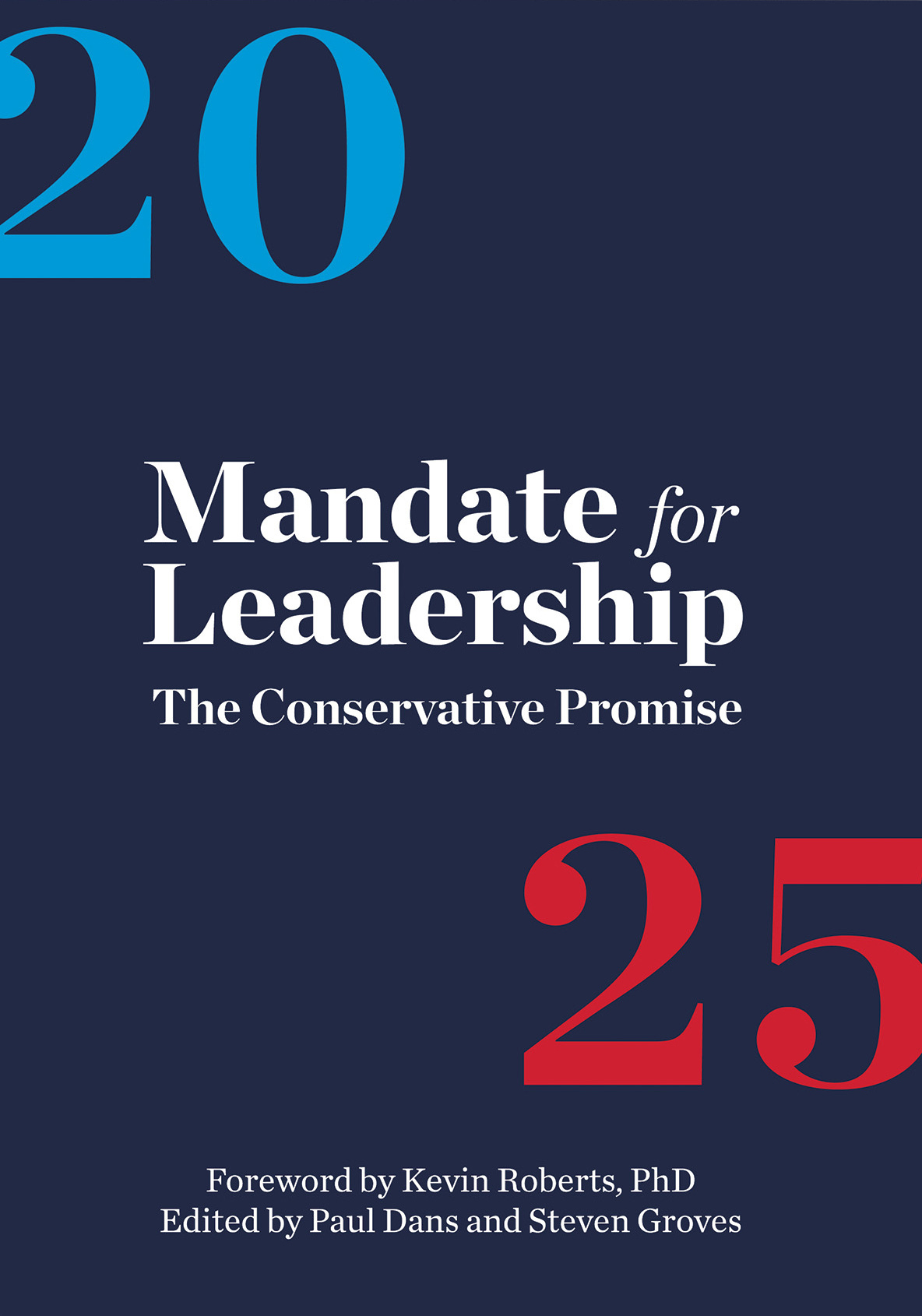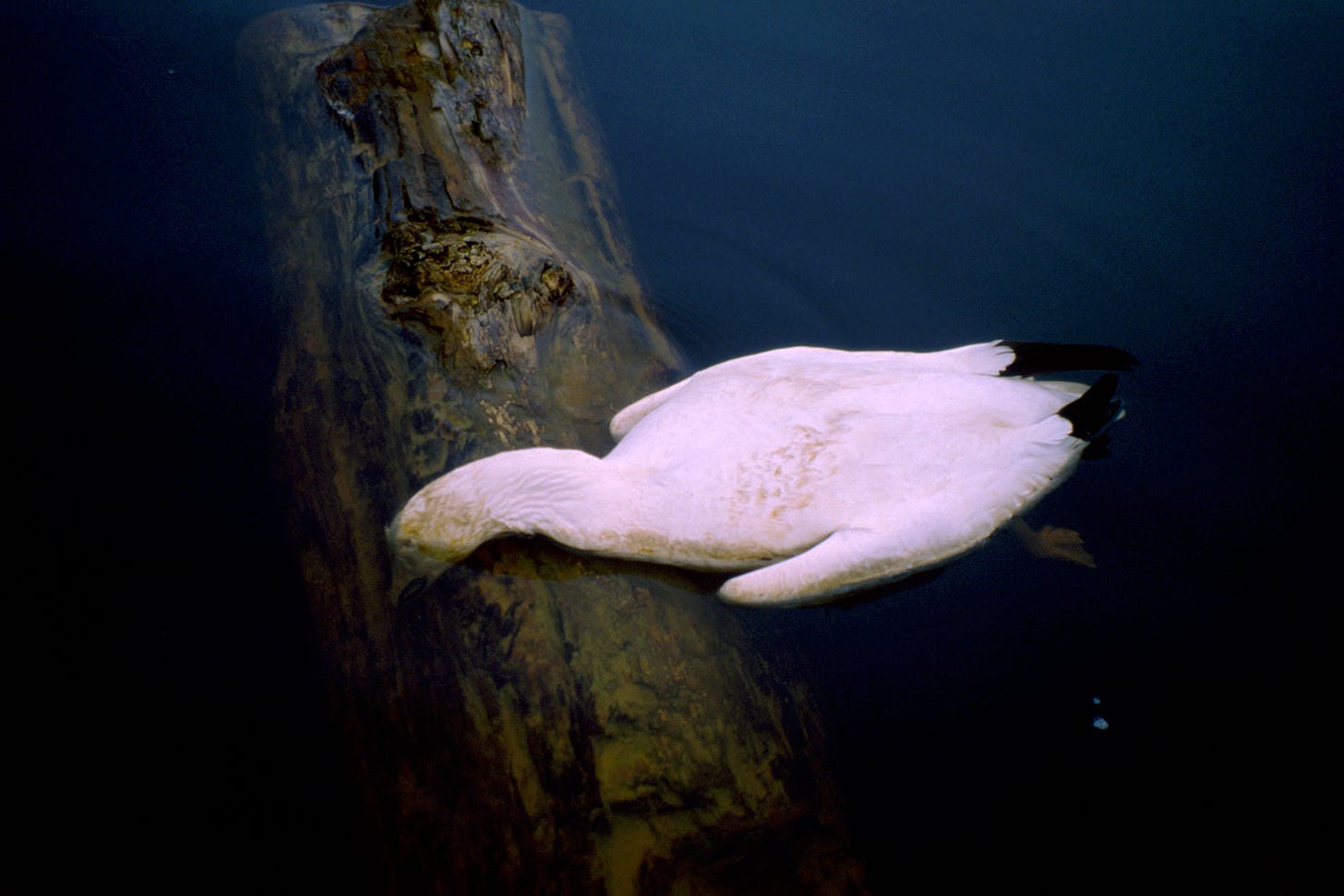Hello everyone:
Something a little different this week. While I think quite a bit about politics and elections, I don’t write about them other than as background realities in my inquiries into how we’ve transformed life on Earth. My purpose here in the Field Guide is to articulate our relationship with the living world: as it was, as it is, and as it might be. In this election year, I think that it’s essential that I explore how that relationship might change if Donald Trump, the presumptive Republican candidate, were reelected. Whatever your politics, please note that I’m basing my assessment of the environmental consequences on the promises and plans of the political movement behind his candidacy.
As always, please remember to scroll past the end of the essay to read some curated Anthropocene news.
Now on to this week’s writing:
The poet Charles Simic described himself as a child of history, but not the kind of history any child should experience. Simic grew up in the bombed streets of Belgrade, Yugoslavia, during WWII. “I’ve seen tanks, piles of corpses, and people strung from lampposts with my own eyes,” he said. The family fled to the U.S. after the war. “My travel agents,” he wrote, “were Hitler and Stalin.”
Simic, who never forgot what the men of history do to ordinary people, distinguished himself early on with poems like “Butcher Shop,” where a butcher’s apron hanging on a hook has “blood on it smeared into a map / Of the great continents of blood / The great rivers and oceans of blood.” Half a century after WWII, as Yugoslavia broke into bloody fragments at the feet of Serbian nationalists, Simic wrote tirelessly for opposition newspapers there, trying to offer some sanity amid the chaos before it was too late. It wasn’t enough.
I tell you all this because Simic, who was one of my teachers back in my poetry days, was a brilliant and clear-eyed observer of the darker forces of political history. One nugget of wisdom that feels particularly relevant today is this: “You just need a committed passionate fanatic minority to lead a society over a cliff.”
There are a lot of cliffs surrounding society these days, but the two that concern me here are those we call the climate and biodiversity crises, which are symptoms of our profound disruption of conditions for life on Earth. The fanatic minority in question is a small coterie of radical conservatives, unafraid of their authoritarian and fascist impulses, determined to put Donald Trump back in office. Their reasons for doing so may not be directly about the environment, but the environmental consequences will be dire nonetheless.
Every relevant scientific observation and assessment indicates that we cannot afford a four-year delay in progress on reducing emissions, shrinking the fossil fuel industry, incentivizing renewable energy, replanting forests, and enacting robust plans for protecting and revitalizing wildlife populations and their habitats. And a four-year delay is the best possible outcome, because the intent of another Trump administration will be, to the greatest extent possible, to dismantle the regulatory state, eliminate any federal role in reversing climate change, encourage fossil fuel extraction, weaken environmental protections, and make it difficult for any subsequent administration to fix what was broken.
Of course, we don’t know what would happen under a 2nd Trump presidency, but we can look at two sources to make a prediction: what was done during his first term in office, and what the campaign and its allies are planning for the next. I’ll focus more on the latter, as the historian
does here in her summary of what’s expected of a 2nd Trump presidency in more general political terms. Note that she is not speculating, but listing what’s been “vowed” and “promised”:The once-grand Republican Party has been captured by the right wing. It has lined up behind former president Donald Trump and his cronies, who have vowed to replace the nonpartisan civil service with loyalists and to weaponize the Department of Justice and the military against those they perceive as enemies. They have promised to incarcerate and deport millions of immigrants and children of immigrants, send federal troops into Democratic cities, ban Muslims, silence LGBTQ+ Americans, prosecute journalists, and end abortion across the country. They will put in place an autocracy in which a powerful leader and his chosen loyalists make the rules under which the rest of us must live.
I would amend her last sentence to say “they will try to put in place,” because much depends on who fills up the seats in Congress, on how much the American public protests these changes, on whether the courts are able to rein in some of the administration’s excesses, and on whether Trump leaves office at the end of his four-year term. He had no intention of leaving last time, and would be better equipped to avoid leaving this time.
It’s worth noting, too, that if nothing else, much of the oxygen in the political theater would be consumed by his court cases and by the fights over the administration’s planned attacks on democratic norms, abortion rights, women’s rights, race and gender equality, immigration, etc. It will be hard to talk much or do much about funding the EPA or maintaining clean energy incentives in the Inflation Reduction Act, for example, when the streets are filled with people fighting to stop a national abortion ban.
It’s clear enough from comments on the campaign trail – “Drill, baby, drill” comes to mind – that Trump plans on unpacking the wrecking ball for another go at regulations and climate legislation. But this does not begin to describe what’s been planned, or what’s at stake this time. The first iteration of the Trump presidency was haphazard – he did not expect to win, or to govern, and it showed – but this next one, should it happen, would open the floodgates for an extraordinarily comprehensive effort to dismantle American governance.
You can read the plan. Or much of what’s planned, at least. The 920-page Mandate for Leadership by Project 2025, as it’s called, is the product of the conservative Heritage Foundation and more than 80 other like-minded groups, and its stated goal “is to assemble an army of aligned, vetted, trained, and prepared conservatives to go to work on Day One to deconstruct the Administrative State.” Its director more bluntly described that “army” as “weaponized conservatives ready to do battle against the deep state.”
“Never before,” the director told Politico, “has the whole conservative movement banded together to systematically prepare” for the transfer of power. The Project 2025 plan doesn’t include the random and quixotic aspects of Trump’s leadership, nor does it itemize his plans for personal vengeance, but it contains just about everything else. In the big picture, as Inside Climate News points out, “Project 2025 is part of a larger plan by Trump and his far-right allies to greatly expand the president’s authority over every part of the federal government.”
Whatever your thoughts on the size and power of the federal government, the reshaping of the executive branch into a unitary conservative bastion cannot be in the interest of the majority of Americans, who broadly agree on many issues: environmental protection, climate regulation, free speech, rational immigration policy, abortion rights, gun control, and a tax increase for corporations and the wealthy.
While I’ll cheerfully admit that the federal government is huge, slow, and byzantine, it’s worth pointing out that a more likely definition of the “deep state” targeted by Project 2025 is merely a sturdy executive branch that does not offer extraordinary favor to the minority interests of a mostly white, male, conservative, Christian nationalist population and the corporations they are aligned with. (Christian nationalism, I should point out, is a tenet of Project 2025.)
The notion of a “deep state” is a fringe conspiracy theory, but Project 2025 strikes me as an effort to build its conservative incarnation. If that seems like too strong a statement, consider that part of the plan is to seed the government with thousands of loyal Trump supporters, and to increase the number of conservative political appointees across all executive agencies.
So, what specific policy recommendations in Project 2025 have me (and much of the world) so concerned? Honestly, there are too many to count.
Anti-Science Bias:
I’ll start with the strategic anti-science bias of the document, which advocates for ridding the government of “the progressive ideology that unelected experts can and should be trusted to promote the general welfare in just about every area of social life.” In other words, scientists and other experts at federal agencies shouldn’t be allowed to shape regulatory action. I call this language strategic because it’s a calculated effort to push regulatory decisions toward the courts (which have been shifted hard to the right in recent years) and to Congress (which is now deeply shaped by conservative gerrymandering).
There is an awful synergy here too with action at the Supreme Court, which seems poised to gut the Chevron doctrine, a longstanding judicial policy of letting experts at agencies define how to interpret their mandates from Congress.
Climate:
Nowhere is the anti-science bias more obvious than in Project 2025’s plan to eliminate progress on American efforts to reduce emissions and build out a renewable energy system. Climate chaos is “mild and manageable,” according to the authors. The sooty fingerprints of the fossil fuel companies are all over this document.
Not that a 2nd Trump administration would need a push. As Politico reminds us, “Trump pulled the U.S. out of the Paris climate agreement, staffed his environmental agencies with fossil fuel lobbyists and claimed – against all scientific evidence – that the Earth’s rising temperatures will ‘start getting cooler.’” Of the various authors of climate-related chapters in Project 2025’s Mandate for Leadership, several are climate deniers.
Their recommendations include repealing or gutting the Inflation Reduction Act, which is by far the single most important piece of climate legislation the U.S. has ever passed. The IRA is driving and incentivizing a new energy economy out of the ashes of the fossil fuel era.
Project 2025 also calls for:
shutting down the Loan Program Office at the Dept. of Energy, which currently has $400 billion to spend on new clean energy technology
eliminating climate change as a policy priority at the National Security Council
encouraging Arctic drilling and more broadly pushing for maximum development of oil and gas reserves, stating that the federal government has an “obligation to develop vast oil and gas and coal resources” on public lands
preventing the government from regulating CO2 emissions by reversing an Environmental Protection Agency (EPA) ruling on its harms to human health
ending the enforcement of emissions standards for cars and trucks.
This is a catastrophic litany that would make the U.S. a pariah (again) amid the fragile global coalition focused on reducing the chaos of a rapidly heating world. The Times put it this way:
The plan calls for shredding regulations to curb greenhouse gas pollution from cars, oil and gas wells and power plants, dismantling almost every clean energy program in the federal government and boosting the production of fossil fuels.
And noted climate scientist Michael Mann explains in an op-ed for The Hill that Project 2025 would also “bar other states from adopting California’s clean energy policies and put the fossil fuel industry fox in the environmental henhouse by turning over regulation of polluters to Republican state legislatures.”
In the Project 2025 worldview, actions on climate are driven by “fear-based rhetoric” that’s used to force citizens to accept “ineffective, liberty-crushing regulations, diminished private property rights, and exorbitant costs.” Thus, the plan is to save us from liberal oppression, forgetting somehow that the difficult reality that awaits us is physical rather than political.
Environment and Biodiversity:
The plan for the EPA goes much further than getting rid of emissions regulation. According to Inside Climate News, Project 2025 would be “especially damaging” for the EPA and would do “gross violence to the environment.” The plan would, among many other changes,
eliminate the EPA’s environmental justice and public engagement functions, drastically slash the agency’s budget and terminate new hires in what the plan’s authors refer to as “low-value programs.” The plan would also revive the so-called “secret science” rule, a controversial proposal by the Trump administration that would have severely limited how the EPA can use scientific studies in its policy making.
Every function that makes the EPA invaluable, whether protection of clean air and water or defending the existence of threatened or endangered species, is at stake here. Even clean air and water action would be largely shifted to state and local authorities. And as I explained in my recent three-part series on the Endangered Species Act, the agency needs far more funds for the far greater need that awaits the agency, as habitats wither and extinctions increase.
The 32-page chapter on the EPA in Project 2025 is openly hostile to the top-down regulation of fossil fuel companies, chemicals, and pesticides. It refers to the companies behind the toxic transformation of the planet as “politically disfavored industries,” as if politics somehow trumped physics and ecology. Which, I suppose, is the point.
The EPA chapter is also extraordinarily detailed. The author, Mandy Gunasekara, has a long association with climate denial and advocacy for the fossil fuel and chemical industries. She was a deputy assistant administrator in the EPA under Trump, and was “the chief architect of the Paris Accord withdrawal and the repeal of the Clean Power Plan,” according to DeSmog. She knows the agency well and seems well-positioned to turn it into an ineffective husk of its current self.
At a glance, other slashes that Gunasekara has planned for the EPA include:
beginning a “pause and review” of major environmental regulations
repealing regulation of hydrofluorocarbons (HFCs), which are potent greenhouse gases
no longer incentivizing fuel standards for aircraft
weakening emissions reporting across all sectors
limiting the agency’s ability to make new rules or enforce existing ones
increasing political appointees while decreasing scientific staff
radically reducing what waters can be protected by defining them as “relatively permanent, standing or continuously flowing bodies of water,” which eliminates many critical wetland habitats
“revisiting” the designation of PFAS chemicals as hazardous
ending the use of a precautionary approach to the regulation of toxic chemicals and pesticides
“reforming” Endangered Species Act assessments of harm to insects by pesticides by accounting for the benefits of pesticides for agriculture
as a Day One Priority, telling Congress that “EPA will not conduct any ongoing or planned science activity for which there is not clear and current congressional authorization”
adding six senior political appointees “charged with overseeing and reforming EPA research and science activities”
suspending and reviewing the activities of EPA advisory bodies
incentivizing the public to “identify scientific flaws and research misconduct” at the EPA
Meanwhile, the 28-page chapter on the Dept. of the Interior is a butcher shop specializing in reversing Biden policies that underpin the land protection and fossil fuel reduction goals of 30x30 and America the Beautiful, reinstating Trump-era aggressive fossil fuel policies, opening up public lands in Alaska and the lower 48 for coal, oil, gas, and mineral exploration, and savaging the Endangered Species Act.
The ESA is falsely described as having a dismal success rate, but the author’s recommendations will do nothing to improve it. First, he suggests that Congress “take action to restore [the ESA’s] original purpose and end its use to seize private property, prevent economic development, and interfere with the rights of states over their wildlife populations.” Second, he advises (among other recommendations) that U.S. Fish and Wildlife:
delist the grizzly bear in the Yellowstone and Continental Divide ecosystems and the gray wolf in the entire lower 48
give western states jurisdiction over greater sage grouse management
stop moving threatened and endangered species into new habitat that can support them in a warming world
implement a “conservation triage” program to manage species because of a “constrained budget”
stop using “so-called species specialists who have obvious self-interest, ideological bias, and land-use agendas”
Elsewhere, the document calls for re-enacting a Trump-era rule that gave legal protections to energy companies and other industries that kill birds. That’s the environmental sensibility that runs through Project 2025.
But you get the point. I haven’t even dug into the chapters on the Dept. of Agriculture, the Dept. of Transportation, and Dept. of Energy. If you want to read a far-right conservative vision of the nation, and you have a significant tolerance for imagining the death of normal American governance, I highly recommend you poke around in the document.
And to be fair, I should acknowledge that there’s a general insistence in Project 2025 on creating a more effective government, and this is clear in some sensible recommendations for streamlining, communicating, etc., throughout the chapters. But these are nontoxic nibbles in a poison pill the size of the White House.
The Heritage Foundation has been writing comprehensive policy plans for incoming Republican presidents for decades. But Trump has already proved to be the most enthusiastic recipient in the organization’s history, as a Rolling Stone article explains. Ronald Reagan implemented about half of the policies offered to him over his eight-year term, but Trump embraced two-thirds within his first year.
The good news is that, according to a survey taken last August by Climate Power and Data for Progress, a majority of Americans, including Republicans, reject many of Project 2025’s changes to climate and environmental regulation:
“Project 2025 is a dream for polluters, but it would be a nightmare for our country,” said Climate Power deputy executive director Claire Moser. “When given a choice between maintaining President Biden’s clean energy plan and this extreme MAGA Republican plan to roll back climate progress and key environmental protections, voters strongly support the clean energy transition that is already under way. Even a majority of Republican voters reject key elements of this extreme plan – and it will be a political liability for GOP candidates running in 2024.”
Given all this, it’s possible that a hefty portion of the 2025 plan would be too unpopular or too difficult to enact, or that Trump’s antics and quests for vengeance would force a national focus elsewhere. But remember that list of thousands of “weaponized conservatives” ready to go to work, motivated not by polls or media attention but by ideological goals.
Also, many of the people who stuck with Trump to the end of the previous administration have been involved in drafting portions of Project 2025. As a Post article explains, the intent is to surround Trump with staff more loyal to him than to the rule of law: “The overall vision that Trump, his campaign and outside allies are now discussing for a second term would differ from his first in terms of how quickly and forcefully officials would move to execute his orders.”
I should note that if somehow Donald Trump doesn’t make it to the nomination, whether through criminal conviction or a failure at the ballot box, neither of his probable replacements (Nikki Haley, Ron DeSantis) will be any less likely to adopt the principles and policy recommendations of Project 2025. They may not be weighed down by Trump’s need for personal vendettas or fawning adoration, but their policy interests are largely the same.
Finally, I have to insist that whatever objections climate activists and environmentalists may have to the Biden administration – the decision to allow the Willow project comes to mind – he’s done far, far more on climate action than any other president, and protected more U.S. lands and waters than any president since JFK. And, more to the point, everything we hold dear on the spectrum of climate action and environmental protection is at stake if Biden loses this election.
The enactment of Project 2025 would be as fatal to U.S. and global climate goals as it would be to many species.
Ideological movements, as Charlie Simic knew all too well, can grip the public imagination and turn a society toward a cliff of its own making. The populist leaders of those movements, whether charismatic or clever, don’t need violence to take office. We can simply vote them in. The 20th century was a graveyard of violent ideologies disguised as utopias. Fear them, follow me, give me more power to fight that which we fear. We fall for it, but must always be careful we don’t fall too far.
But we now live in the Anthropocene, the most bizarre and consequential era in human history, when our fate is woven with the fate of life on Earth. What we believe, and how we vote, matters not just for the threads of American society but for the fabric of life itself.

Thanks for sticking with me.
In other Anthropocene news:
From NPR, do you want to know why moths and other insects are drawn to your outside lights? It’s a classic Anthropocene question, and one that may have consequences for the conservation of certain insect species. “If you care about insects,” says a Harvard entomologist, “this study seems to offer one take-home message, which is that people shouldn't point lights up at the sky.” Please, make sure all outside lights are shielded so that they only point downward.
From Vox, the saga of stray cats in the extinction capital of the world: Hawaii. The article does a great job of laying out the arguments on both sides and demonstrating that the cat lovers who continue to feed and care for feral cat colonies are, in the end, prolonging suffering for the cats and supporting the murder of wildlife.
From the Oklahoman, a good story of a small tribe finding and taking the opportunity to buy back a sacred mountain.
From Noema, an excellent article on the effects of noise pollution on people and wildlife, and some possible solutions.
From Hannah Ritchie’s Sustainability by Numbers, the best analysis of bird and bat mortality by wind turbines I’ve seen anywhere. Yes, there is significant mortality, especially for bats, but it pales in comparison to mortality from cats, collisions with windows and cars, and pesticides. Ritchie does the math and explains it clearly and succinctly.
From the Volts podcast, a conversation about a smart way to make huge improvements in the U.S. grid: upgrading the power lines with carbon fiber technology. This could double or triple the capacity of the grid at a fraction of the cost of building new lines.
From Reasons to be Cheerful, a Maine-made technology is on the verge of helping ease the housing crisis by 3D-printing small homes with wood fiber and bio-resins. The 600-sq-ft homes will be built entirely of natural materials and will be fully recyclable.
Also from Reasons to be Cheerful, the newest state park in California is former ranch land being rewilded back into biodiverse floodplain.








Great piece Jason. Two things stuck out for me, the first being this sentence in 2025 plans for the EPA: Incentivizing the public to “identify scientific flaws and research misconduct” at the EPA. I can only imagine an army of flat-earthers, chem trail enthusiasts, and climate deniers, given a voice and a role in vetting serious research. The second is more general. The success of any move towards a more effective response to climate change and species extinction depends on long term predictability. Even if Trump eventually loses his bid for the Presidency, the very fact that the 2025 plan is out there, undermines confidence, both at home and abroad, and discourages investment in solutions.
I WENT INTO THe MAVERICK BAR
by Gary Snyder
I went into the Maverick Bar
In Farmington, New Mexico.
And drank double shots of bourbon
backed with beer.
My long hair was tucked up under a cap
I’d left the earring in the car.
Two cowboys did horseplay
by the pool tables,
A waitress asked us
where are you from?
a country-and-western band began to play
“We don’t smoke Marijuana in Muskokie”
And with the next song,
a couple began to dance.
They held each other like in High School dances
in the fifties;
I recalled when I worked in the woods
and the bars of Madras, Oregon.
That short-haired joy and roughness—
America—your stupidity.
I could almost love you again.
We left—onto the freeway shoulders—
under the tough old stars—
In the shadow of bluffs
I came back to myself,
To the real work, to
“What is to be done.”
Gary Snyder, “I Went into the Maverick Bar” from Turtle Island. Copyright © 1974 by Gary Snyder